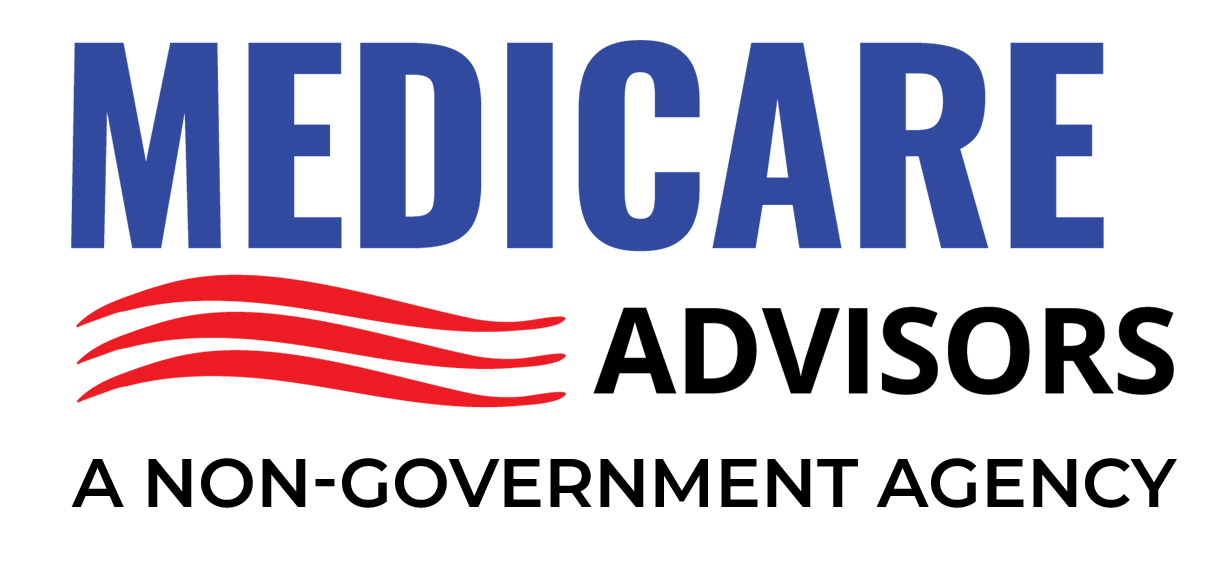Medicare Supplement Plans: A Brief Overview
Medicare Supplement (Medigap) policies are designed to help cover certain expenses that Original Medicare (Part A and Part B) might not pay in full. This typically includes copayments, coinsurance, and deductibles. While Original Medicare provides hospital (Part A) and medical (Part B) coverage, there can still be significant out-of-pocket costs that can catch beneficiaries by surprise. That’s where Medigap plans come in:
- Uniformity of Coverage: All Medigap plans are standardized by the federal government. This means the basic benefits of a specific Medigap plan (like Plan F) are the same, regardless of which insurer issues the policy.
- Variety of Plans: There are multiple Medigap plans (A, B, C, D, F, G, K, L, M, and N), each offering different levels of coverage.
- Choice and Flexibility: You can visit any doctor or hospital that accepts Medicare, as Medigap plans do not have networks (unlike Medicare Advantage plans).
Among all the Medigap plans available, Plan F and Plan G often stand out for their robust coverage packages. Let’s dive into each separately to understand their major distinctions and how they may benefit you.
Medicare Plan F: What You Need to Know
Historical Significance
Medicare Plan F has long been regarded as one of the most comprehensive Medigap plans. For many years, Plan F stood out because it covered all the gaps in Original Medicare, including the Part B deductible. This meant that beneficiaries who held Plan F typically paid their monthly Medigap premium and had minimal (if any) out-of-pocket expenses when receiving Medicare-covered services.
Quote from Henry Beltran, Owner of Medicare Advisors:
“Medicare Plan F was considered the ‘gold standard’ for a long time. People loved it because it simplified their healthcare bills. They didn’t have to worry about deductibles or coinsurance—everything was basically covered.”
Coverage Highlights
Plan F covers:
- Part A deductible
- Part A coinsurance and hospital costs (up to an additional 365 days after Medicare benefits are used up)
- Part B deductible
- Part B coinsurance or copayment
- Part B excess charges
- First three pints of blood
- Part A hospice care coinsurance or copayment
- Skilled nursing facility (SNF) care coinsurance
- Foreign travel emergency coverage (up to plan limits)
Essentially, Plan F takes care of all the out-of-pocket expenses that Original Medicare doesn’t pay, making it ideal for those who prefer near-100% coverage.
Eligibility
- Individuals newly eligible for Medicare on or after January 1, 2020 cannot purchase Plan F (or Plan C).
- If you were eligible for Medicare before January 1, 2020, you might still buy Plan F (even if you haven’t yet enrolled) depending on your specific circumstances and the underwriting requirements set by the insurer.
This is a critical point: Plan F is not available to anyone who only became eligible for Medicare on or after January 1, 2020. Thus, its general availability is gradually decreasing over time.
Premiums and Costs
Due to its comprehensive coverage, Plan F often comes with higher monthly premiums. Some insurers offer high-deductible Plan F, which lowers the monthly premium but requires you to meet a high deductible before the plan begins to pay.
Henry Beltran’s Perspective:
“I’ve found that many beneficiaries paying a higher premium for Plan F don’t mind because they love the peace of mind that comes with zero out-of-pocket costs. But I always advise clients to compare premiums and see if Plan G may be a better deal over the long run.”
Find Medicare Plans in 3 Easy Steps
We can help get up to $0 monthly premium Medicare plans
Medicare Plan G: What You Need to Know
Rise in Popularity
Since Plan F is no longer available to new Medicare enrollees, Plan G has risen in popularity. It’s almost identical to Plan F in terms of coverage except that Plan G does not cover the Part B deductible. Nonetheless, Plan G has become the go-to for new beneficiaries seeking a high level of coverage.
Coverage Highlights
Plan G covers:
- Part A deductible
- Part A coinsurance and hospital costs (up to an additional 365 days after Medicare benefits are used up)
- Part B coinsurance or copayment
- Part B excess charges
- First three pints of blood
- Part A hospice care coinsurance or copayment
- Skilled nursing facility (SNF) care coinsurance
- Foreign travel emergency coverage (up to plan limits)
Noticeably absent from this list is the Part B deductible, which you must pay out of pocket before Medicare Part B starts covering your outpatient services (for example, doctor visits, lab tests, etc.). In 2025, the standard Part B deductible is subject to yearly adjustments, but in recent years it’s been slightly over $200.
Premiums and Costs
- Plan G typically offers lower premiums compared to Plan F, reflecting the fact that the plan does not cover the Part B deductible.
- If you can handle the one-time yearly Part B deductible out-of-pocket expense, Plan G can be a more cost-effective option over the long term, especially if the difference in monthly premiums between Plan F and Plan G is larger than the deductible.
Henry Beltran’s Perspective:
“Because Plan G and Plan F are so similar, Plan G often wins out purely on financial grounds. I recommend my clients do a simple math calculation: ‘Is the premium difference more than the Part B deductible?’ If yes, you may save money with Plan G.”
Coverage Breakdown: Plan F vs. Plan G
Let’s compare Plan F and Plan G side by side to see the main difference in coverage:
| Coverage | Plan F | Plan G |
| Part A deductible | Covered | Covered |
| Part A coinsurance & hospital costs | Covered | Covered |
| Part B deductible | Covered | Not Covered |
| Part B coinsurance or copayment | Covered | Covered |
| Part B excess charges | Covered | Covered |
| Skilled Nursing Facility (SNF) care | Covered | Covered |
| Hospice care | Covered (coinsurance/copay) | Covered (coinsurance/copay) |
| Blood (first 3 pints) | Covered | Covered |
| Foreign travel emergency | 80% (up to plan limits) | 80% (up to plan limits) |
Key takeaway: The only real difference is that Plan F pays the Part B deductible while Plan G does not. Everything else is nearly identical.
Cost Comparisons and Premium Considerations
The Part B deductible is a critical cost factor:
- If you have Plan F, you won’t pay the Part B deductible out of pocket, but your premium is higher.
- With Plan G, your premium is lower, but you’ll pay the Part B deductible (once a year).
Find Medicare Plans in 3 Easy Steps
We can help get up to $0 monthly premium Medicare plans
Example Scenario
Imagine a scenario where the Part B deductible is $226 (a figure used in recent years, though it changes). If the difference in monthly premiums between Plan F and Plan G is more than $19/month ($226/12 = $18.83), then Plan G would likely be more cost-effective for you.
Always compare different insurance companies’ premiums in your state because each insurer sets its own rates. The coverage is standardized by the government, but the pricing is not.
Henry Beltran’s Cost Analysis:
“I’ve had clients come in thinking Plan F was the only plan that makes sense, but after running the numbers, they realize Plan G actually saves them hundreds of dollars per year. But it all depends on your local rates.”
Availability and Enrollment Restrictions
- Plan F is closed to new Medicare beneficiaries who became eligible on or after January 1, 2020. If you were eligible before that date, you can still apply (if underwriting or special enrollment circumstances permit).
- Plan G is available to all Medicare beneficiaries.
- Insurance companies may require medical underwriting if you are outside your Medigap Open Enrollment Period or a qualifying special enrollment window. This can affect your eligibility or premium pricing.
Important Enrollment Periods
- Medigap Open Enrollment Period: A six-month period starting the month you turn 65 and are enrolled in Medicare Part B. During this time, you can purchase any Medigap plan available in your state without undergoing medical underwriting.
- Guaranteed Issue Rights: Certain life events (e.g., losing employer coverage) grant you the right to buy some Medigap plans without underwriting. The specifics vary by state.
Potential Drawbacks of Each Plan
Even though both Plan F and Plan G provide substantial coverage, they are not without potential drawbacks.
Potential Drawbacks of Medicare Plan F
- Higher Premiums: Because Plan F covers everything, including the Part B deductible, it often carries a higher monthly premium. Over time, the added cost may exceed the deductible savings.
- Limited Availability: Newer beneficiaries (eligible for Medicare after 2020) cannot enroll in Plan F. This reduced pool of enrollees could potentially affect the plan’s long-term pricing. Some experts predict premium hikes could become more common as the Plan F enrollee pool ages.
“For those grandfathered into Plan F, it’s a wonderful deal if the premiums stay reasonable. But we have to keep an eye on how the costs evolve.” – Henry Beltran
Potential Drawbacks of Medicare Plan G
- Part B Deductible: You have to pay the annual deductible out of pocket before Medicare Part B starts paying. While not exorbitantly high, it is an additional cost.
- Premium Variability: Monthly premiums still vary widely by state and insurer. In some areas, Plan G premiums might be almost as high as Plan F premiums, diminishing its cost advantage.
Find Medicare Plans in 3 Easy Steps
We can help get up to $0 monthly premium Medicare plans
People Are Always Asking
In my experience as a Medicare journalist, people are always asking about the primary differences between Plan F and Plan G and whether Plan F’s discontinuation for new enrollees signals a decline in quality. They often wonder if they should keep their existing Plan F or switch to Plan G. The answer is highly personal and usually boils down to cost and availability—as well as medical underwriting if you are considering a switch. Always carefully evaluate your local insurance market, your annual Part B deductible, and how much you’re paying in monthly premiums before making a change.
Reviews and Personal Experiences
To get a sense of how real people view Plans F and G, we asked a few individuals about their experiences:
- Janet B. (Ohio, age 72)
“I’ve had Plan F for six years, and it’s been a blessing. I pay a bit more monthly, but I love not worrying about extra bills. I’ve had two surgeries in that time, and it was so easy—no surprise costs!” - Thomas R. (Florida, age 68)
“I went with Plan G two years ago. I do have to pay the Part B deductible once a year, but my monthly premium savings are more than that deductible. It’s worth it to me.” - Lydia S. (Texas, age 71)
“I had Plan F for a while, then my premiums jumped. I decided to see if I could switch to Plan G. I had to undergo some underwriting, but I got approved, and so far it’s been great. I pay less each month even though I pay the deductible.” - Raymond D. (California, age 75)
“I’m still on Plan F because I was eligible before 2020, and I’m fine paying more if it means I don’t have surprise bills. I’m comfortable with that. If my premium goes up too much in the future, I might reconsider.”
These experiences reveal the general sentiment: Plan F appeals to those who want zero out-of-pocket costs beyond their monthly premium, while Plan G typically suits those looking for some financial balance, especially if the premium difference offsets the annual deductible.
Frequently Asked Questions (FAQ)
Below are some of the most common questions people ask about Medicare Plan F vs. Plan G.
- Can I switch from Plan F to Plan G if I already have Plan F?
Yes, you can switch, but you’ll generally need to go through medical underwriting unless you are in a guaranteed-issue period. If you have health conditions, there’s a chance you could be denied or face higher premiums. - What happens if I’m not eligible for Plan F?
If you became eligible for Medicare on or after January 1, 2020, you won’t be able to buy Plan F or Plan C. Plan G is the closest alternative in terms of coverage. - Are Plan F or Plan G premiums tax-deductible?
Your Medigap premiums can sometimes be counted as a medical expense if you itemize deductions. Check with a tax professional for the latest rules and thresholds. - What if I travel abroad frequently?
Both Plan F and Plan G provide foreign travel emergency coverage (80% after a deductible, up to plan limits). However, consider additional travel insurance for comprehensive coverage outside the U.S. - Is there a high-deductible Plan G?
Yes, as of recent years, there is a high-deductible version of Plan G. This means you pay a higher deductible before the plan starts covering expenses. It tends to have a lower premium, but be prepared for more out-of-pocket costs upfront.
References
- Medicare.gov – Official U.S. Government Site for Medicare
- Centers for Medicare & Medicaid Services (CMS) – Medicare Supplement Insurance Guide
Conclusion
Medicare Plan F vs. Plan G—both remain excellent Medigap options that offer robust coverage far beyond what Original Medicare alone can provide. For those who were eligible before 2020, Plan F remains a reliable choice, guaranteeing minimal medical expenses beyond your monthly premium. However, rising premiums and a shrinking enrollee pool may become significant considerations.
In contrast, Plan G is accessible to all Medicare beneficiaries, offering almost the same coverage except for the Part B deductible. For many beneficiaries, the lower monthly premium of Plan G ends up being a better financial deal over time, especially if that premium difference outweighs the annual deductible. The biggest takeaway is to compare the costs from multiple insurers in your state, factor in your personal healthcare usage, and decide which plan’s structure aligns best with your financial and medical needs.
Final Word from Henry Beltran:
“Neither Plan F nor Plan G is universally ‘better.’ Both can be great options. My advice? Run the numbers for your specific case, compare premiums, and don’t be afraid to consult a trusted Medicare advisor if you get overwhelmed. The right plan can save you a lot of headaches—and money—down the road.”
Key Points to Remember
- Plan F pays the Part B deductible but typically comes with higher premiums.
- Plan G requires you to pay the Part B deductible out of pocket, generally offering lower monthly premiums in return.
- Availability restrictions apply to Plan F for new Medicare enrollees (post-2020 eligibility).
- Always compare costs, and read the fine print on plan options in your state.
Thank you for reading this comprehensive guide. By considering both the benefits and drawbacks of Plans F and G, you can make an informed choice that safeguards your health and finances for years to come.





